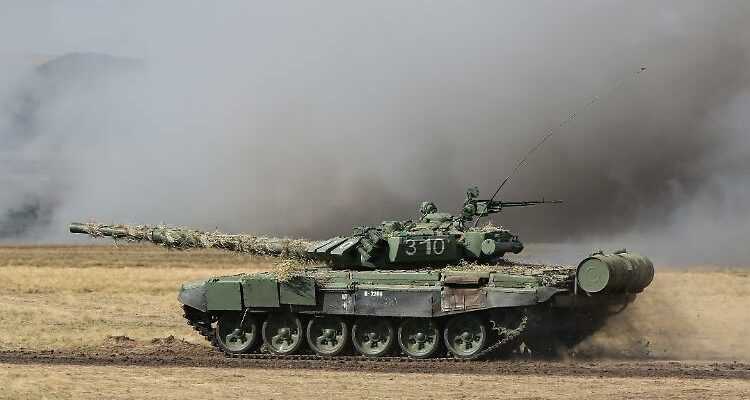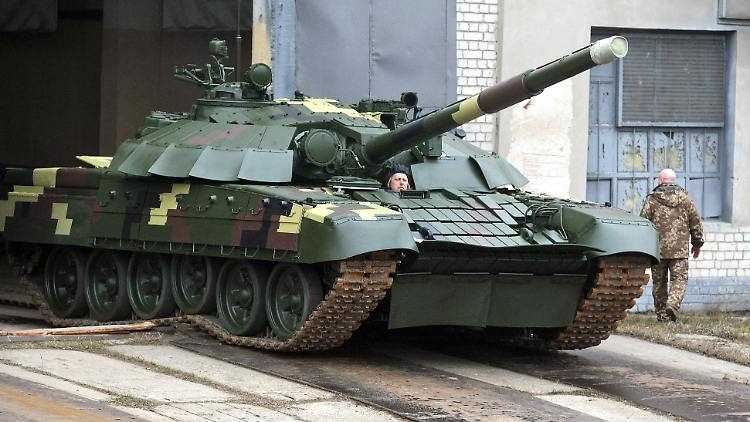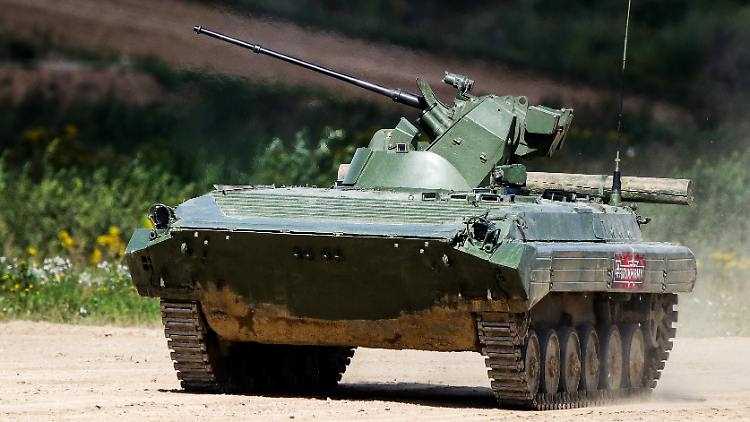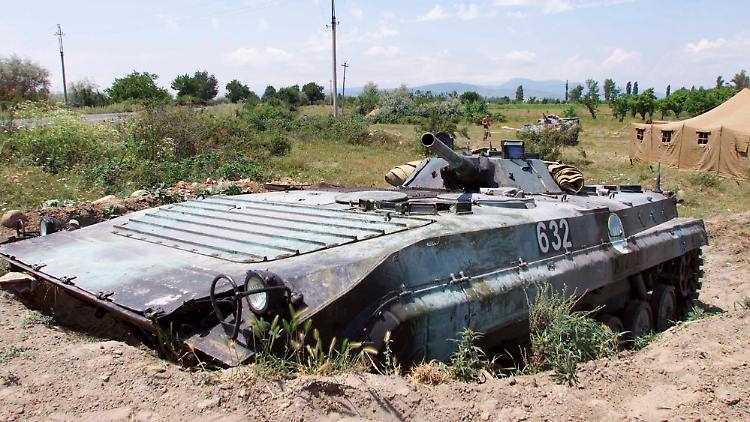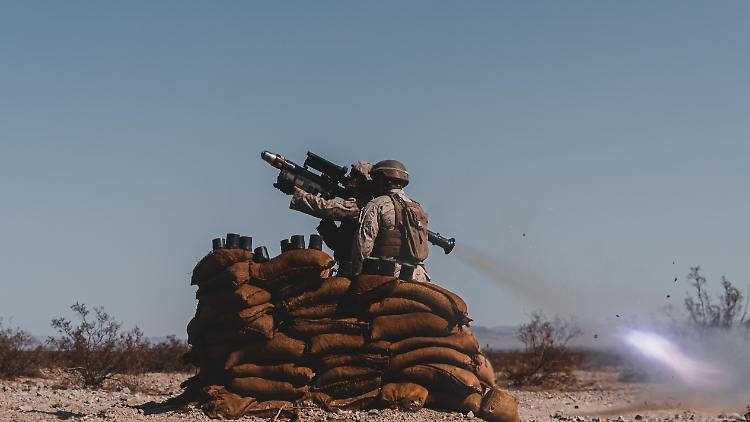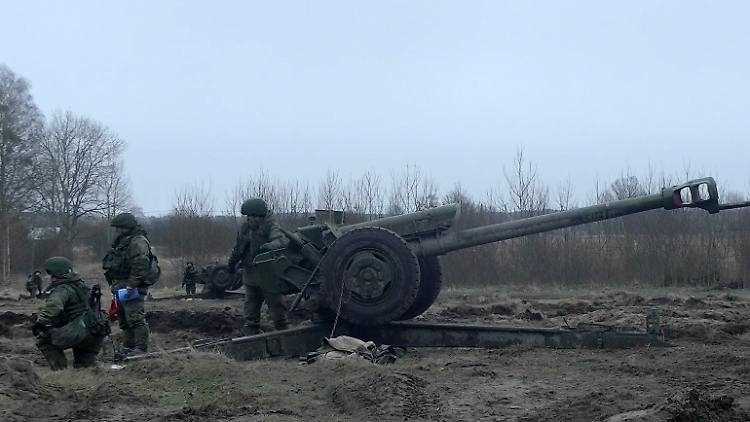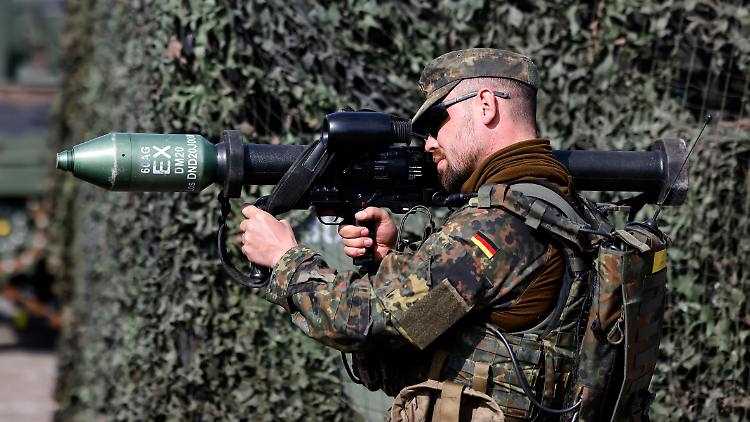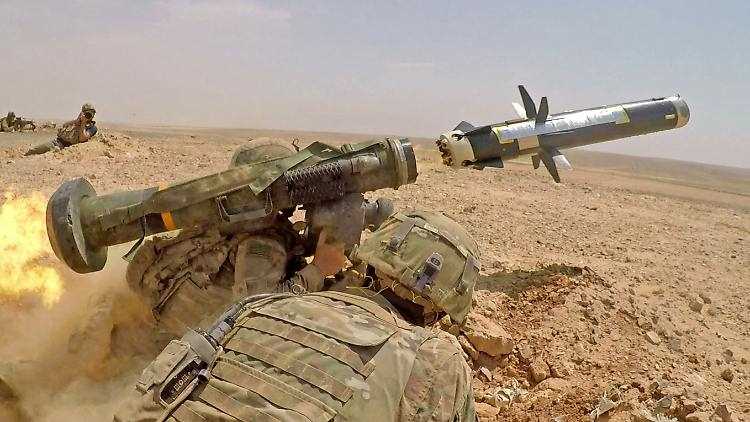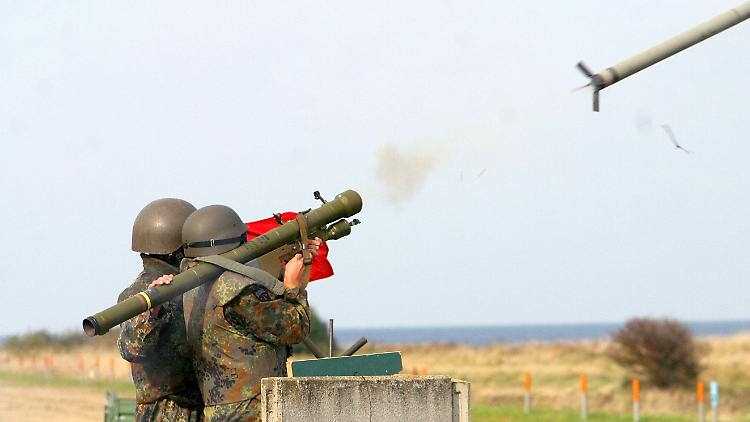In order to be able to defend itself against the Russian army, Ukraine needs weapons. A demand that the Ukrainian Foreign Minister Kuleba once again made clear. But what weapons systems are going to Ukraine and how do they work?
At the NATO foreign policy meeting in Brussels, Ukraine’s Foreign Minister Dmytro Kuleba pointed out that there were only three issues on his list for the war against Russia: “arms, arms, arms”. The requirement is a tightrope walk. NATO Secretary General Jens Stoltenberg pointed out that Ukraine is of course waging a defensive war and therefore the difference between offensive and defensive weapons is not of great importance. “But we also have a responsibility,” Stoltenberg said, “to prevent this conflict from spreading beyond Ukraine and becoming even deadlier, more dangerous and more destructive.”
But what weapons are supplied to Ukraine to resist the Russian army? The latest news was that the Czech Republic was supplying Soviet T-72 tanks. But other weapon systems are also provided. What they can do and what they are still good for can be evaluated very differently.
Tank T-72
Really new the T-72 is not. The start of production is also hidden in its nomenclature. In 1972, the Uralvagonzavod Engineering and Defense Company delivered the first T-72 tanks to the Soviet Army and put them into service there. The T-72 was then also allowed to be built in Poland, Czechoslovakia and Yugoslavia as part of the Warsaw Treaty, which was brought into being as a counterweight to NATO in 1970 by the socialist states of the East under the aegis of the USSR. After the start of series production in 1974, the tank was constantly modernized and adapted to the different possibilities of the user states. In this respect, it cannot be said at this point from what year, with what equipment and in what condition the T-72 are.
The T-72 is powered by a 38.88-liter, 12-cylinder turbocharged diesel engine. The maximum power is 780 hp, on later models it increased to 840 hp. The tanks and reserve barrels of the T-72 hold a total of 1590 liters of fuel, which makes a range of 550 kilometers possible. The maximum speed is 60 km/h on the road and 36 km/h off-road. The armor is composite armor, which was additionally reinforced with reactive armor from 1980 onwards. In addition, the armor was strengthened by a few millimeters with each new generation.
The main weapon of the T-72 is a 125mm D-81TM cannon. This is a smoothbore gun with an elevation range of minus 6 degrees and plus 14 degrees. The total combat load for the cannon is 44 rounds. 22 shots are in the loading carousel in the hull floor under the turret, another 22 in different places in the fighting area. The automatic loader of the T-72 is considered very reliable.
As a rule, 2200 charging cycles should run without errors. Depending on the rangefinder and the ammunition used, the gunner is able to hit targets at a distance of 500 to 4000 meters with a deviation of 2 to 10 meters. The T-72’s secondary armament includes a 7.62mm machine gun, known as the PKT, and a 12.7mm machine gun (NSWT) to counter low-flying fighter jets. Like all Russian tanks, the crew of the T-72 consists of three men: the driver, the gunner and the commander.
Infantry fighting vehicle BMP-1
The Czech Republic is said to have also delivered the amphibious armored personnel carrier BMP-1 to the Ukraine. Also a vehicle from Soviet development and now one of the most common armored vehicles in the world. The abbreviation BMP stands for Боевая Машина Пехоты (Boyevaya Maschina Pjechoty) in Russian, which means “combat vehicle of the infantry”.
The BMP-1 is armed with a 73 mm smoothbore gun in the turret, which can also fire armor-piercing hollow-charge grenades, among other things. The rate of fire is six rounds per minute. The accurate range is between 800 and 1300 meters. The BMP-1 also has a launcher rail for launching the 9M14 Malyutka anti-tank missile. Like the T-72, the BMP-1 carries a 7.62mm machine gun (PKT).
In addition to the commander, gunner and driver, there are eight soldiers on board the BMP-1. There are four firing hatches on each side of the crew compartment from which the crew can fire. In addition, the BMP-1 is equipped with an infrared headlight, periscope riflescope and a smoke system that makes the vehicle virtually invisible by injecting diesel into the exhaust or so-called ejector.
The BMP is powered by a 6-cylinder V-diesel engine (UTD-20) with an output of 300 hp. The BMP-1 can reach speeds of up to 65 km/h on the road and 45 km/h off-road. The range is 600 kilometers on the road and 400 off-road.
FIM-92 Stinger anti-aircraft missile
The FIM-92 Stinger anti-aircraft missile from the US manufacturer Raytheon is dangerous for the Russian Air Force. Like a bazooka, the launching device for the Stinger missiles is carried over a soldier’s shoulder. The surface-to-air missile weighs 16 kilograms, including the ammunition. After launch, the rocket itself searches for its target using infrared control. In doing so, it follows the engine heat of the fighter jet or that of a helicopter. The accuracy is about five kilometers. In addition to the USA, the federal government also wants to deliver 500 Stinger missiles to Ukraine.
122mm howitzer D-30
The D-30 howitzer with a caliber of 121.92 millimeters was also developed in the Soviet Union between 1954 and 1960. The medium field howitzer also belonged to the stock of the National People’s Army (NVA) of the GDR. The D-30 weighs almost three tons and is used to fire on tanks, vehicles or troops. Depending on the ammunition, the range is 15 to 22 kilometers. The D-30 is still manufactured today by the Military Industry Corporation in Sudan.
The crew of the D-30 consists of eight soldiers: the gunner, the gunner, five loaders and one ammunition gunner. The rate of fire is six to eight rounds per minute. When changing location, the howitzer can be towed at a speed of up to 60 km/h.
Type 3 Panzerfaust
With a total weight of 13 kilograms, the Type 3 Panzerfaust is also carried over the shoulder of a soldier. It consists of a reusable grip and the cartridge, which is divided into a launch tube and a projectile. The standard cartridge works on the principle of armor-piercing shaped charge grenades and penetrates armor steel up to a thickness of 700 millimeters. A tandem charge can also destroy reactive armor. Concrete and field fortifications can be penetrated with the so-called “Bunkerfaust”, a detonation-delayed fragmentation explosive device, whereby the so-called additional charge only explodes inside the target. According to unconfirmed information, the Ukrainian army is to receive 2,000 rocket-propelled grenades from German stocks.
Bazooka Javelin FGM-148
The “Javelin FGM-148”, which is produced by Raytheon and Lockheed Martin, was first presented in 1989. The advantages of this guided missile system, which looks not unlike a bazooka, are its weight of just under 23 kilograms and its length of about a meter. However, at $200,000 each, the system isn’t cheap. In addition, each shot is calculated with another 100,000 euros for the guided missile.
The Javelin is a so-called “Fire and Forget” anti-tank guided missile. “Fire and forget” here stands for a type of weapon that is able to find its own target. The highlight of this rocket with infrared sensors is that it does not head directly for its target, but climbs up to 150 meters and then hits the tank at its most sensitive point, from above. On the one hand, the armor here is not particularly thick, on the other hand, the reactive armor, which makes it possible to repel the attacking missile warhead once, is missing. The angle and impact of the rocket also explain the name “throwing spear”.
Unlike a bazooka, the rocket is ejected from the tube with a so-called “soft start”. Only when a certain distance from the soldier is reached does the rocket ignite, which makes it almost impossible for the defense to locate the shooter. In addition, the Javelin can also be fired from tight spaces and cover without the soldier running the risk of being injured by the fire from the launching missile. However, the javelin has one shortcoming: Its range of use is only two kilometers and the maximum range is double that
9K32 Strela-2 anti-aircraft missile
The Strela-2 anti-aircraft missile also comes from Soviet production. In fact, the Strela (the Arrow) is the most widely used anti-aircraft missile in the world. The Strela-2 had been manufactured in the Soviet Union since 1968. The system consists of the rocket, a launch tube with a sight and a handle with integrated electronics and a thermal battery. In addition, an IFF (Identification Friend or Foe) receiver can be mounted on the shooter’s helmet to avoid friendly fire. A passive antenna, which emits acoustic signals into the shooter’s headphones, is used to detect and lock on a target.
The rocket is ready for use within six seconds after switching on the power supply. The shooter follows the target with the optical viewfinder and then pulls the trigger. Now the seeker is armed. While the shooter tracks the target for another 0.8 seconds, the seeker electronics attempt to lock onto the target and then ignite the missile. The warhead detonates upon impact with the target.
The Strela-2 from the stocks of the Bundeswehr, which still come from the NVA, turned out to be unusable when they were supposed to be delivered to the Ukraine. Microcracks in the rocket’s propellant had led to corrosion and oxidation. Some of the rockets are said to have been very moldy in their wooden boxes. To date, 2000 functioning Strela have been delivered from Germany to the Ukraine.
